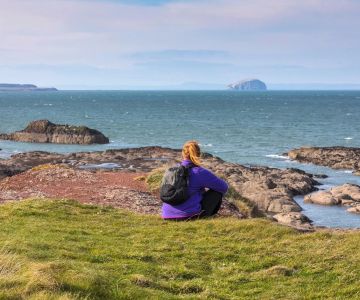Tips for Traveling to Remote Areas Without a Car
- Introduction to Remote Travel
- Planning Your Trip Without a Car
- Alternative Transportation Options
- Experiencing Remote Destinations
- Real Travel Experiences and Stories
- Why Choose Remote Travel?
1. Introduction to Remote Travel
Traveling to remote areas without a car might seem daunting at first, but with a bit of planning and the right knowledge, it can lead to some of the most rewarding and unique experiences. Whether you're looking to explore untouched landscapes or immerse yourself in cultures far from the beaten path, there are plenty of ways to make your journey enjoyable and efficient without the need for a car.
Remote destinations often offer a different kind of adventure. By leaving behind the comfort of your usual travel routine, you’ll open yourself up to exploring new horizons in ways that many others never experience. Traveling without a car can also allow you to connect more deeply with your surroundings, whether it’s through hiking, taking local transportation, or simply spending more time in nature.
2. Planning Your Trip Without a Car
Planning a trip to a remote area without a car requires more forethought than a typical vacation, but it can be done. Start by researching your destination to understand its transportation options and accessibility. Many remote locations are well connected by buses, trains, or ferries, so make sure to check if public transport can get you where you want to go.
It’s essential to build a flexible itinerary, as transportation in remote areas can sometimes be less frequent than in urban centers. Research how long it takes to travel between destinations, and factor in extra time for delays. Additionally, booking accommodations that offer easy access to local transportation will minimize the stress of getting around.
3. Alternative Transportation Options
When traveling to remote areas, public transportation might not always be the best option. Instead, consider alternative transportation methods like biking, hiking, or using local taxis and rideshares. For example, in places like rural Iceland or parts of the Swiss Alps, biking and hiking are common ways to reach stunning destinations, allowing you to experience the beauty of nature up close.
In certain regions, you might also find services like shared rides or minivans used by locals to transport groups to specific areas. It’s a good idea to ask locals for recommendations on transportation that might not be immediately obvious to tourists. Another option is renting a motorbike or scooter, which can provide the freedom to travel at your own pace without the need for a car.
4. Experiencing Remote Destinations
One of the greatest advantages of traveling to remote areas without a car is that it allows you to experience destinations from a different perspective. You’ll have the chance to connect with local communities and immerse yourself in authentic experiences. For example, you might take a boat ride through the Amazon rainforest or trek through the jungles of Southeast Asia to reach a hidden temple.
Remote areas often have fewer tourists, which means that you’ll have more opportunities for personal discovery. Whether it’s the warmth of a village community or the untouched landscapes, the absence of a car often enhances your connection to the environment around you.
5. Real Travel Experiences and Stories
Let me share a personal experience from my own travels. I once visited a remote village in the Andes Mountains of Peru, where the only way to reach it was by taking a series of buses and then walking along a narrow trail. Initially, I was apprehensive about the lack of a car, but as I walked through the pristine landscapes, I realized that the journey was just as remarkable as the destination itself. Along the way, I met locals, shared stories, and enjoyed breathtaking views of the mountains. I truly felt like an explorer.
Another memorable trip took me to the remote Faroe Islands, where I had to rely on local ferries and hiking routes to get from one island to another. Despite the unpredictable weather, the experience was unforgettable. The stunning cliffs, fjords, and remote fishing villages were accessible only by foot or boat, and the journey added a sense of adventure to the whole experience.
6. Why Choose Remote Travel?
Traveling to remote destinations without a car isn’t just about the practicality of transportation – it’s about embracing a different way of experiencing the world. Remote travel often provides a sense of tranquility and freedom that is difficult to find in crowded tourist hotspots. You’ll encounter unique landscapes, cultures, and people, all while avoiding the hustle and bustle of modern life.
If you’re someone who enjoys stepping off the beaten path, traveling without a car can be an incredibly rewarding experience. Whether you’re hiking through remote national parks, staying in secluded cabins, or interacting with local communities, the memories you create will last a lifetime.
Looking to embark on your next remote adventure? Visit Travel Clans for more information on the best remote destinations and how to explore them without a car. Start planning your trip today and discover the freedom that comes with traveling in a more sustainable and immersive way!







 Coney Island Boardwalk Garden4.0 (75 reviews)
Coney Island Boardwalk Garden4.0 (75 reviews) The William Hotel Midtown, Sonder4.0 (555 reviews)
The William Hotel Midtown, Sonder4.0 (555 reviews) Shepard Lake Recreation Area0.0 (0 reviews)
Shepard Lake Recreation Area0.0 (0 reviews) Stairway To Heaven4.0 (185 reviews)
Stairway To Heaven4.0 (185 reviews) Howard Bennett Playground4.0 (152 reviews)
Howard Bennett Playground4.0 (152 reviews) Isle of Meadows4.0 (10 reviews)
Isle of Meadows4.0 (10 reviews) Top Group Travel Destinations in Europe: Best Places for Group Vacations
Top Group Travel Destinations in Europe: Best Places for Group Vacations Best Travel Clans for Sustainable Travel
Best Travel Clans for Sustainable Travel How to Get Involved in Travel Clans for Social Travel: Explore Group Travel Opportunities
How to Get Involved in Travel Clans for Social Travel: Explore Group Travel Opportunities Best Group Vacation Destinations for Friends: Ultimate Travel Ideas
Best Group Vacation Destinations for Friends: Ultimate Travel Ideas Travel Clans for Solo Travelers Looking for Company: Join Unique Travel Communities
Travel Clans for Solo Travelers Looking for Company: Join Unique Travel Communities Best Travel Clans for Women Traveling Together
Best Travel Clans for Women Traveling Together